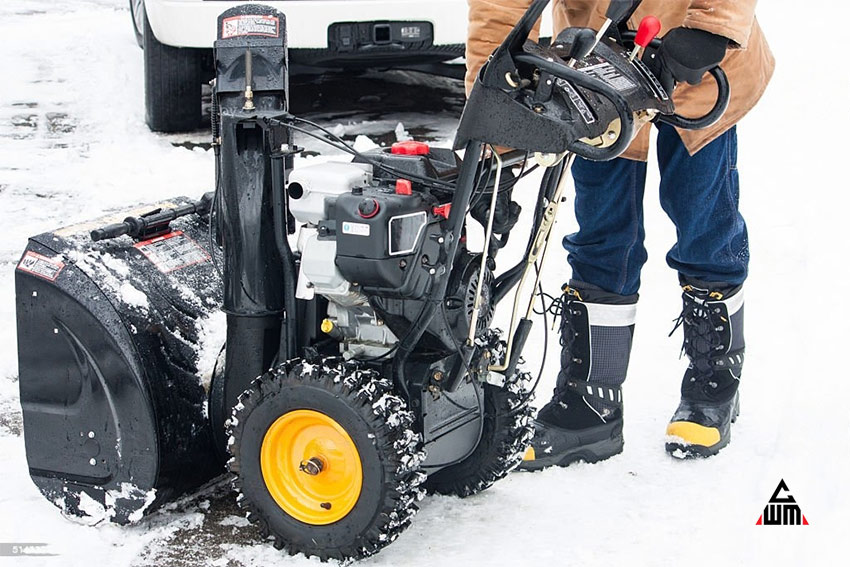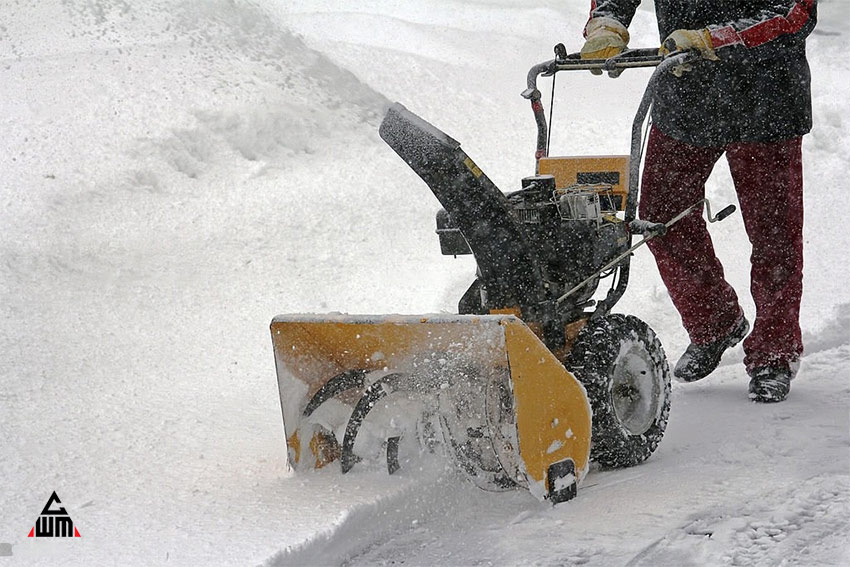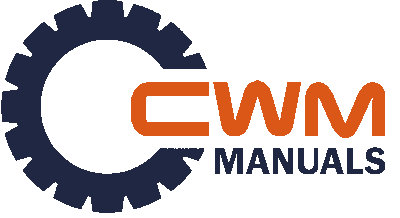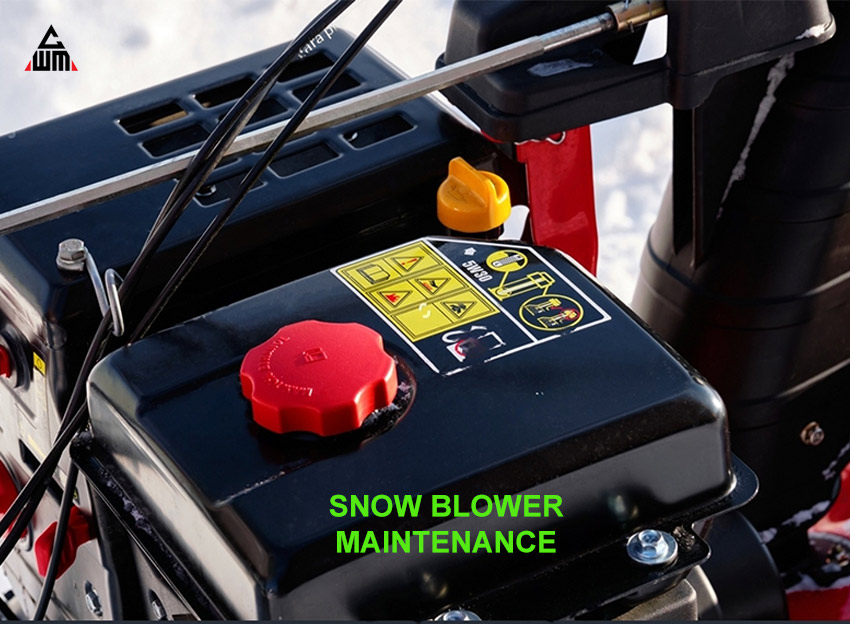Winter can be tough, but it’s even tougher without a reliable snowblower to tackle the snow and ice. To keep your snowblower in top shape and ready to go when you need it the most, regular maintenance is key. In this step-by-step guide, we’ll show you how to keep your machine running efficiently, so you can breeze through the winter months with ease.
Get ready to be the envy of your neighbors with a snowblower that’s always in top condition!
Table of Contents
The Importance of Snow blower Maintenance
Your snowblower is likely to have the most downtime between seasons among all your outdoor power equipment. Whether you had a harsh winter or a mild one, it’s essential to maintain your snowblower. By keeping your blower in perfect shape every season, you can enjoy it year after year and keep snow off your surfaces. This article provides a step-by-step method for maintaining your snowblower equipment. By following this guide, you will not only learn how to clean your tool correctly but also know how to store it.
The Best Time for Snow blower Maintenance
It’s recommended that you perform maintenance on your snowblower before storing it for the offseason so that you’re ready for the next one. Additionally, if you didn’t service your snowblower at the end of the last season, make sure to have it serviced before the next winter season starts.
Step-by-Step Approach to Maintaining Your Snow blower
Snowblower maintenance is easy and straightforward as it involves steps similar to those you would take to maintain your car, such as changing oil and examining belts. The first and most important step is to get the owner’s manual provided by the manufacturers so that you can get familiar with the exact replacement parts, oil, and lubricants that are right for your model of snowblower.

Here are the steps to follow to have your equipment up and running before the first heavy snow:
Step 1: Be Aware of the Basics
The first thing to know is that snowblowers require maintenance, even when they come with a warranty. Each model or type varies slightly in its needs, but both gas-powered and electric snowblowers require some amount of upkeep. You should also plan to replace the spark plugs and air filters every year. Look out for tire pressure, monitor oil and gas levels as well as lubrication, and check out the condition of the rubber paddles and belts. If you are using an electric snowblower, make sure the cords are in good condition, and avoid accidentally running over them while plowing.
Step 2: Inspect, Tighten, or Replace Parts as Necessary
Snowblowers are machines that constantly vibrate when in use, causing some parts to loosen over time. Loose nuts and bolts are something the owners are responsible for maintaining themselves. Get familiar with all the bolts, nuts, and pins in your equipment, so it will be easier to know if one of them is missing. Before using your snowblower, try to twist all exposed bolts with your hand; do this after every use as well. If they feel loose, tighten them immediately. Inspect all the nuts, bolts, cords, screws, and belts, to make sure nothing is loose.
While single-stage snowblowers have just one belt, two-stage snowblowers have two belts, one for the auger and one for the drive. If those belts crack or are worn out, they should be replaced immediately or made sure that they are tight enough and will not snap. The starter cord should also be inspected, and if there is any issue, it should be replaced immediately.
Step 3: Change the Oil and Gas on Fuel-Powered Snowblowers
A snowblower is crucial for its performance and longevity. For a fuel-powered snowblower, changing the oil and gas is an essential step to keep it in good working condition. Check the owner’s manual for specific instructions on how to change the oil and gas.
Before starting the process, make sure the snowblower is on a level surface, and the engine is turned off and cooled down. Drain the old oil and gas completely, and dispose of them properly. Refill the engine with fresh oil of the recommended type and add fuel to the tank. Remember to use the appropriate type of fuel, either regular or premium gas, depending on the manufacturer’s recommendation.
Step 4: Check the Spark Plug
The spark plug is responsible for igniting the fuel in the engine, and it needs to be checked and cleaned regularly. It’s recommended to check the spark plug before each use, especially during the winter season. A dirty or faulty spark plug can cause starting problems or engine misfires.
To check the spark plug, first, remove the spark plug cap and use a spark plug wrench to remove the plug from the engine. Inspect the spark plug for any signs of damage or wear. If it’s dirty or covered in soot, use a wire brush to clean it. If the spark plug is damaged or worn out, it should be replaced.
Step 5: Lubricate Moving Parts
To ensure smooth and efficient operation of the snowblower, all moving parts need to be lubricated regularly. Refer to the owner’s manual for specific instructions on which parts need lubrication and the recommended lubricant.
Common parts that need lubrication include the chute, auger, impeller, and gearbox. Use a high-quality lubricant, such as lithium grease, to lubricate the moving parts. Apply a small amount of lubricant to each part, and wipe away any excess.
Step 6: Check Tires and Chains
Snowblowers with wheels should have their tire pressure checked regularly. If the tires are underinflated, they may not have enough traction to plow through the snow. If you have a two-stage snowblower that uses chains, make sure they are properly fitted and tightened. Chains can increase traction, but if they are loose or improperly fitted, they can damage the tires.
Step 7: Check and Replace the Starter Cord
The starter cord is essential to get your snowblower started, and it’s one of the parts that experience wear and tear over time. Make sure you inspect the starter cord regularly for any signs of damage, such as fraying or stretching. If you notice any damage, replace the starter cord immediately to avoid getting stranded in the middle of a snow-clearing job.
Step 8: Tightening the Bolts and Storage
After you have completed all the previous steps, it’s important to give your snowblower a final check before storing it. Make sure all the bolts and nuts are tightened, and the belts are properly fitted. Store your snowblower in a dry place, and cover it to protect it from the elements. This will help ensure that your snowblower is ready to go when the next winter season arrives.
Snow blower Maintenance FAQ

How often should I maintain my snow blower?
It’s important to perform basic maintenance on your snowblower after every use, such as checking for loose bolts and inspecting the belts and cords. More comprehensive maintenance, such as oil changes, should be done according to the manufacturer’s recommended schedule, usually at least once per season.
Can I perform maintenance on my snow blower myself?
Yes, basic maintenance tasks such as checking for loose bolts and inspecting the belts and cords can easily be performed by the owner. However, more complex maintenance tasks such as oil changes and carburetor cleaning may require professional assistance.
How can I tell if my snow blower needs maintenance?
If you notice any unusual sounds or vibrations, decreased performance, or difficulty starting, it’s likely that your snowblower needs maintenance. Additionally, performing routine inspections and maintenance tasks can help identify potential issues before they become bigger problems.
Can I store my snow blower without performing maintenance?
It’s not recommended to store your snowblower without performing basic maintenance tasks such as checking for loose bolts and inspecting the belts and cords. Additionally, it’s important to perform more comprehensive maintenance tasks such as oil changes and fuel stabilization before storing your snowblower for an extended period of time. Failure to do so can lead to damage and decreased performance.
Conclusion
Proper maintenance is essential to keep your snowblower running efficiently and effectively. By following the step-by-step guide outlined in this article, you can easily maintain your snowblower and extend its lifespan. Regularly inspecting and tightening nuts, bolts, and belts, changing oil and gas, and storing your machine properly are all important aspects of snowblower maintenance. By taking care of your snowblower, you can be sure that it will be ready to tackle any winter storm and keep your property clear of snow and ice. Remember to always refer to the owner’s manual for specific instructions on maintaining your snowblower, and stay safe while using this powerful tool.

